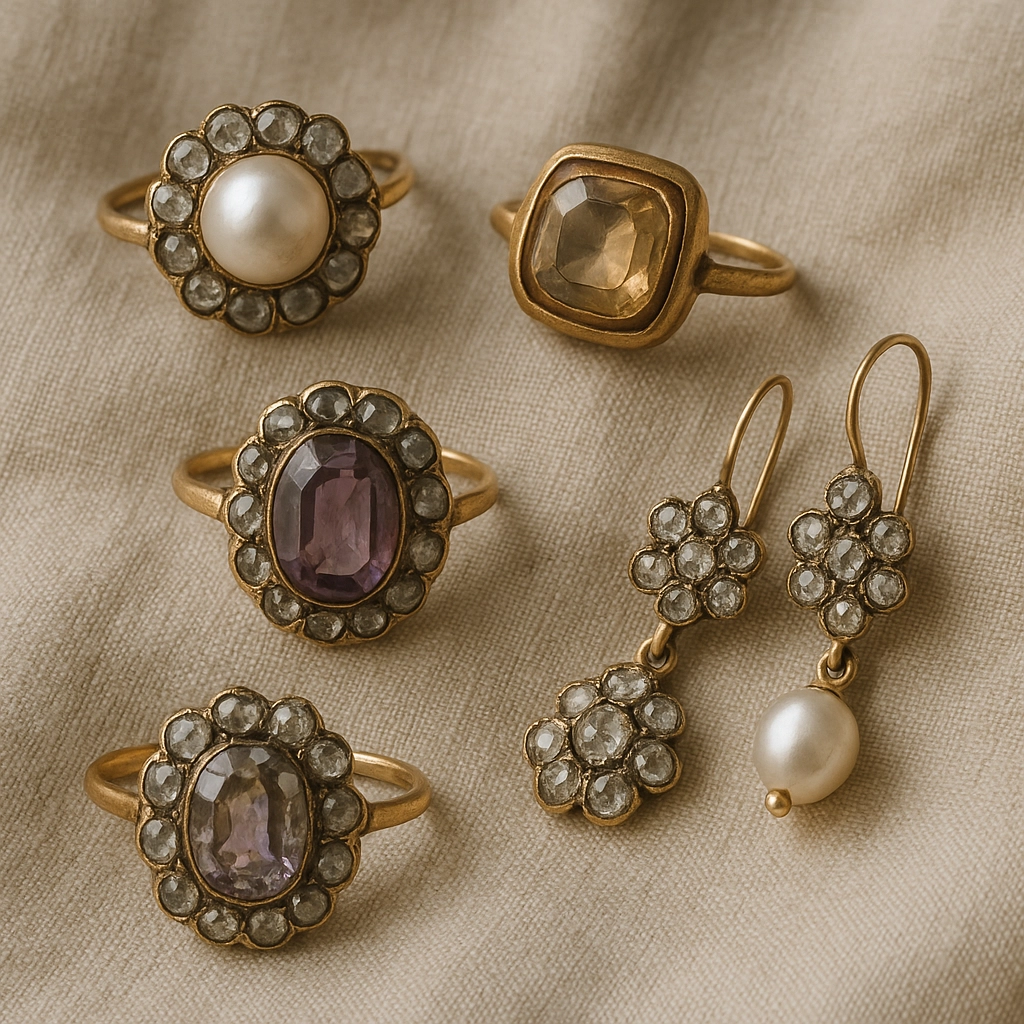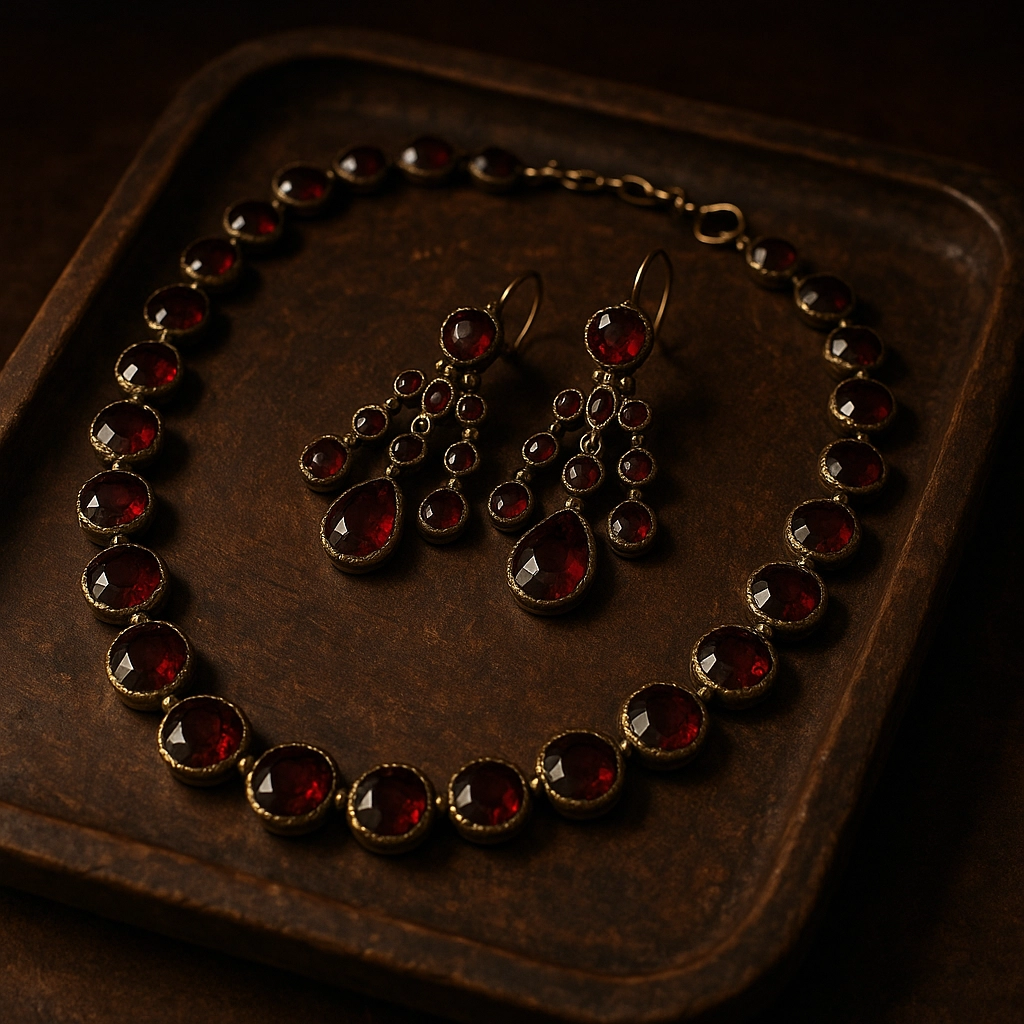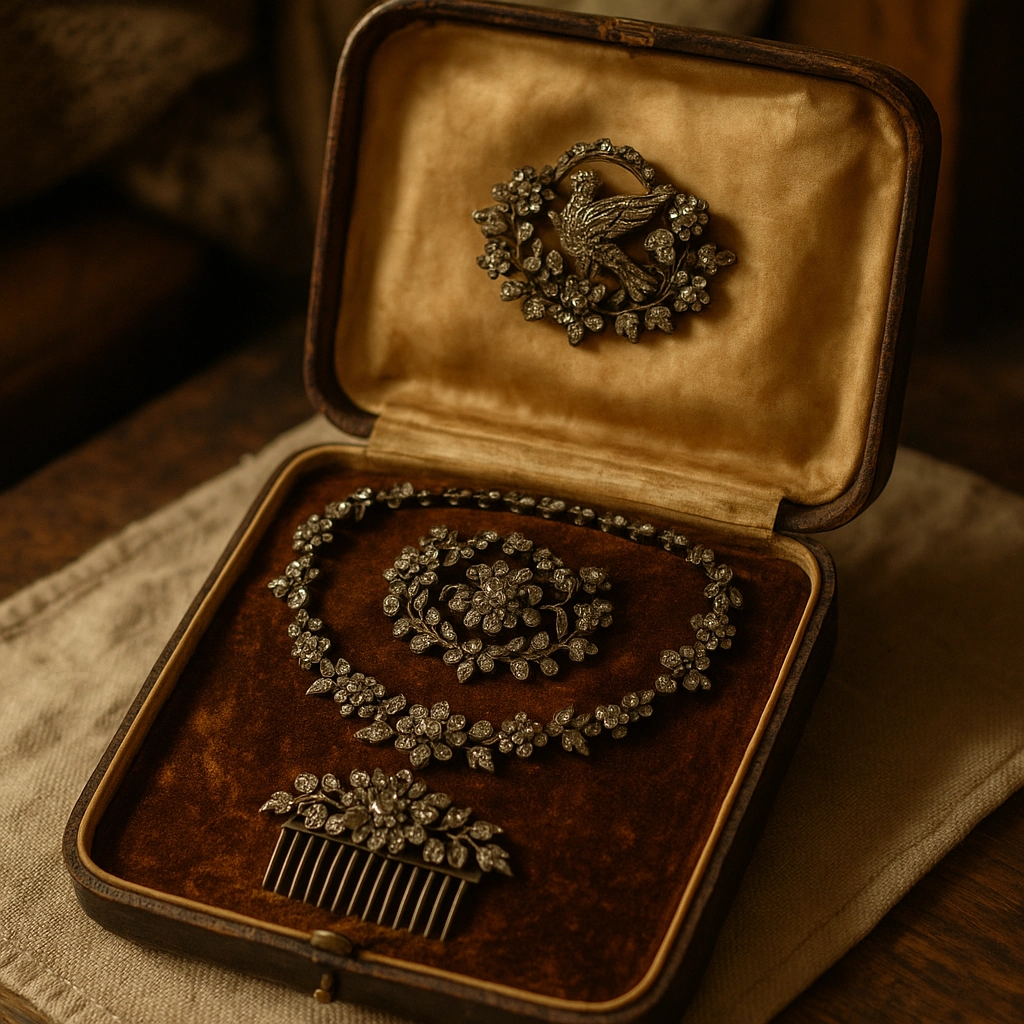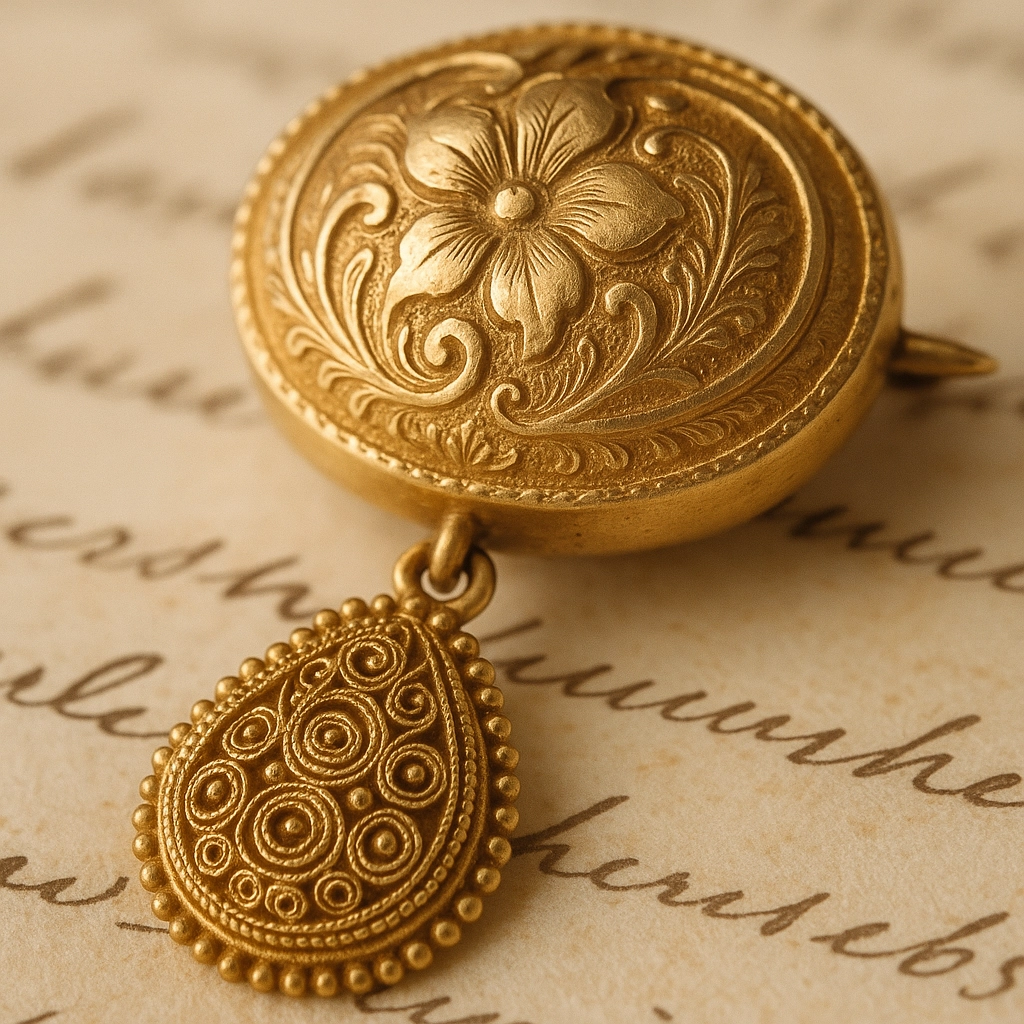Georgian Era Jewelry: Gems, Icons, and Everyday Elegance (Part 2 of 4)
If you were to open a velvet case from the early 1800s, you might be dazzled by the gentle sparkle of rose-cut diamonds, honey-colored topaz, and ethereal clusters of pearls—each stone reflecting centuries-old secrets of love, status, and style. As we continue diving into the world of Georgian era jewelry, let’s talk gems, construction, and the quiet (and sometimes not-too-quiet) glamour that tied it all together.
Gemstones: A Rainbow of Possibilities
When I think about Georgian jewelry, the first thing that comes to mind is the variety. Forget the narrow preferences of later eras—this period was bursting with color. Diamonds were absolutely prized, but unlike today's brilliant cuts, you would have seen rose cuts with their domed tops and flat bottoms, faceted by hand to catch the glimmer of candlelight. Old mine and table cuts offered subtle, smoky sparkle, giving an unmistakably antique vibe.
But there’s so much more than diamonds. Imagine a delicate rivière necklace, links glittering with rubies and sapphires, or a pair of drop earrings set with golden honey topaz (a totally classic Georgian favorite that’s almost vanished from today’s market). Pearls—often creamy and irregular—were staples of daywear, sometimes paired with bright garnets or even fiery chrysoberyls in olive and gold.
Georgian jewelers loved amethyst, especially the lighter shades, since the richer hues from Siberia and South America weren’t common yet. Citrine’s warm glints and peridot’s grassy glow showed up often, each stone handpicked for its individuality. Have you ever seen antique jewelry with foil-backed stones? That wasn’t an accident—craftspeople hand-tinted and fitted soft metal foil behind gems to amplify their shimmer and transform modest stones into showstoppers under flickering light.

Have a look at your own collection: do you own anything with foil-backed gems or see the subtle color play in vintage stones? That’s the Georgian magic at work.
Everyday vs. Exceptional
Jewelry back then walked the line between daily adornment and outrageous evening sparkle. By day, women wore simpler brooches, miniature portrait rings, and modest strings of pearls—often with a sentimental twist or secret compartment. Even simple pieces were packed with symbolism (think acorns for luck, or forget-me-not flowers).
Come nightfall? Out came the rivières. These single-line necklaces were classic showpieces—think close-set colored stones or paste (cut glass made to resemble jewels) set in cool silver or glowing Georgian gold. I always imagine how these must have danced along a neckline in a candlelit ballroom, catching the eye from across the room.
And earrings? Grinadole designs really sum up the maximalist approach: elaborate, chandelier-like arrangements that dangled beyond the jawline, each drop carefully balanced so the movement would catch even more light. If I ever have the chance to see such earrings in person, it’s an absolute treat.

Motifs, Icons & Social Stars
The design motifs were unlike anything before. Yes, there were the florals and ribbons that scream Rococo, but you also get hands (for friendship), hearts, eyes (those famous “lover’s eye” miniatures), crescents, and bird shapes. These weren’t just trendy; they carried deep personal meanings or commemorated special events.
Who wore these pieces? Queen Charlotte and later Queen Adelaide, both trendsetters at the English court, had collections stuffed with rose-cut diamonds and colored stones. Portraits from the time show the upper crust dripping in rivières and multi-piece “parures”—matching sets presented in padded, fitted cases (I’d kill to peek inside one). Even Jane Austen’s heroines would have owned at least a modest necklace or ring; jewelry was a language all its own.
Paste jewelry is another Georgian icon worth mentioning. Aristocrats embraced it as a lower-risk “travel jewelry,” but it was also adored by the rising merchant class for its elegant look at a friendlier price. Today, a well-made paste piece in a closed-back setting is just as collectible as a diamond original.

Construction, Metals & The Handcrafted Touch
There was no mass-production and barely any casting—everything was fabricated by hand, meaning small variations and markings unique to each jeweler. Look closely at a Georgian brooch or necklace, and you’ll almost always spot tiny imperfections or a delicate hand-engraving. That’s the soul of the era!
Rose gold and yellow gold were common (think a soft, butter-yellow, not the bold color of modern 24k), but silver (sometimes lined with gold to prevent tarnish touching the skin) was the go-to for gemstone settings—it makes those foiled stones pop. Jewelers even developed pinchbeck (a clever gold-colored alloy of zinc and copper) so more people could afford a golden glow.
Techniques like repoussé (hammered metal in high relief) and later cannetille (all those wire swirls that look like embroidery) are instantly recognizable markers. Even with simple tools, these craftspeople carved out an entire visual language that still draws eyes today.
The Art of Restoration
Antique Georgian jewelry needs gentle care. Closed-back settings mean that stones shouldn’t get wet, as moisture can tarnish the foil and give stones a dull look. Today, museum conservators use careful dry-cleaning methods and avoid harsh chemicals. If you’re lucky enough to own a Georgian piece, inspect the foils and backs regularly, and if your jewelry ever needs restoration, always seek out specialists who understand these unique construction techniques.
Why Georgian Still Matters
Everywhere I look in the vintage jewelry world, I see echoes of Georgian style—those wild shapes, those smoky gems, the personal symbolism. Wearing a piece from this era connects us to a hands-on history: each gem was cut, set, and foiled by candlelight, not by machine.
So when you catch yourself admiring a piece from your collection or window shopping for something a little bit old and a little bit mysterious, ask yourself: does it have that extra shimmer, a bit of imperfection, a story behind each stone? That’s probably the Georgian spark.

As you explore the legacy of Georgian jewelry, you’ll find that each piece tells a unique story—reflecting not just fashion, but the artistry and vibrant lives of its time. Whether you’re a collector or simply curious, the Georgian era invites you to appreciate beauty shaped by hand, history, and heart.
Stay tuned for Part 3, where we’ll move deeper into how Victorian taste transformed everything that came before—romance, mourning jewels, and all.
Cheers,
Peter